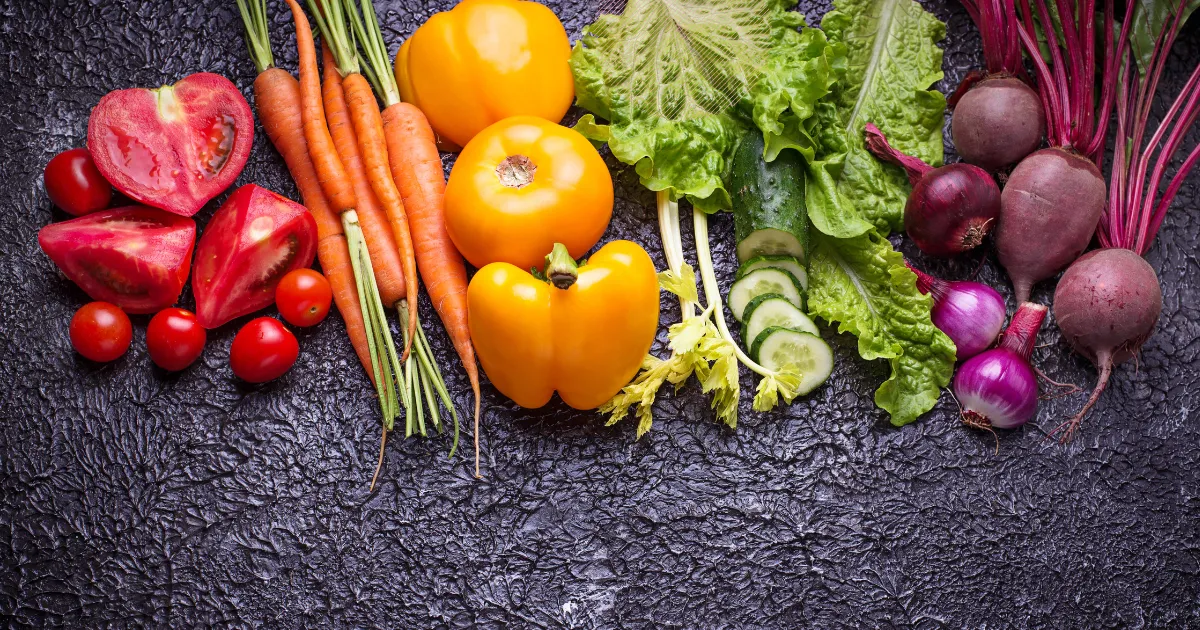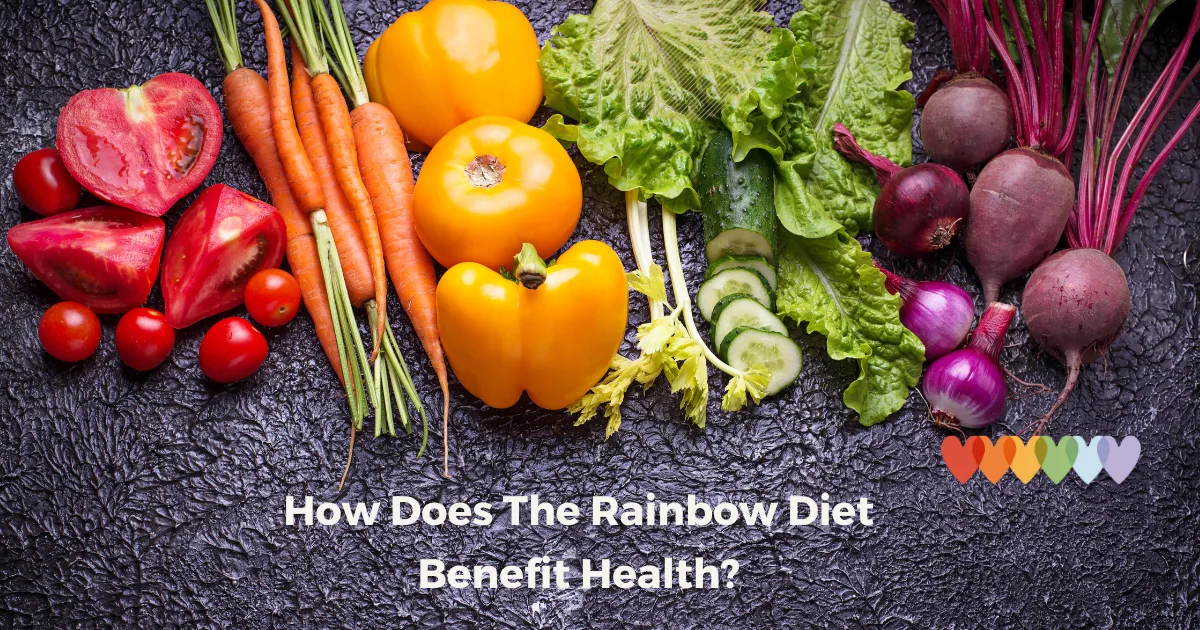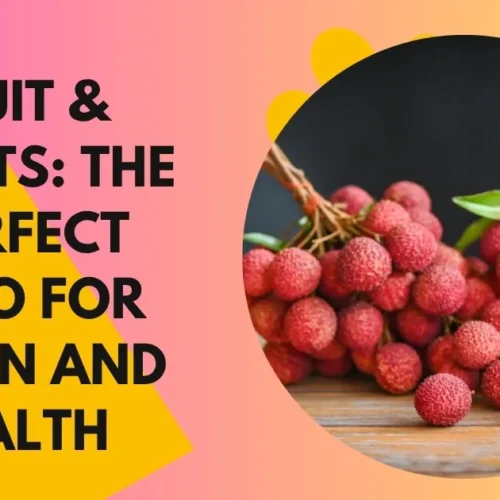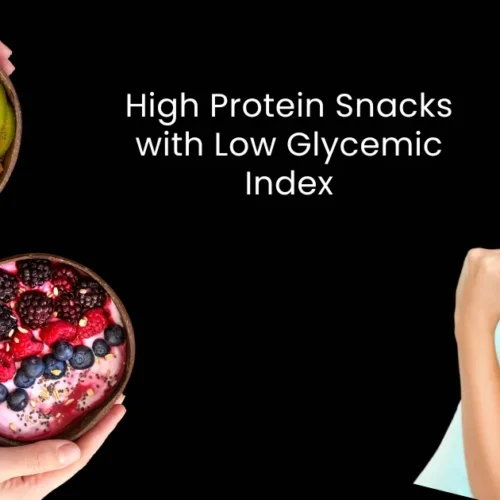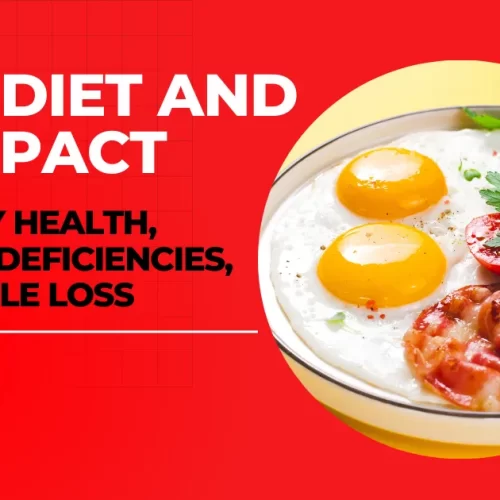Last updated on August 17th, 2025 at 08:26 am
Ready to add a splash of color to your plate AND your life? The Rainbow Diet isn’t just a trend; it’s a vibrant way to nourish your body from the inside out!
- Foods You Should Eat Every Day in the Rainbow Diet - What is the rainbow diet?
- Foods You Should Eat Every Day in the Rainbow Diet This 5-day Rainbow Diet meal plan includes a vibrant mix of foods representing various colors, providing essential nutrients and variety. Each day ranges from 1300 to 1600 calories to support balanced eating. Day 1: Red and Purple Day (Calories: ~1500) Meal Description Breakfast (300 cal) Greek Yogurt Parfait with mixed berries and a drizzle of honey Lunch (400 cal) Grilled Chicken Salad with spinach, cherry tomatoes, red bell peppers, and purple cabbage Snack (150 cal) Red Apple with almond butter Dinner (450 cal) Baked Salmon with roasted beets, red onion, and quinoa Day 2: Orange and Yellow Day (Calories: ~1400) Meal Description Breakfast (300 cal) Smoothie with oranges, mango, banana, and a handful of spinach Lunch (350 cal) Quinoa Bowl with grilled chicken, orange bell peppers, corn, and black beans Snack (100 cal) Carrot and Bell Pepper Sticks with hummus Dinner (350 cal) Stir-fried tofu and Mixed Vegetables over brown rice Day 3: Green Day (Calories: ~1300) Meal Description Breakfast (300 cal) Avocado Toast on whole-grain bread with poached eggs Lunch (300 cal) Spinach Salad with grilled shrimp, cucumber, green beans, and avocado Snack (100 cal) Green Grapes and a small handful of almonds Dinner (600 cal) Zucchini Noodles with Pesto Sauce served with a side of mixed greens Day 4: Blue and Indigo Day (Calories: ~1500) Meal Description Breakfast (300 cal) Blueberry Oatmeal with a sprinkle of chia seeds Lunch (400 cal) Mixed Berry Salad with grilled chicken, blueberries, and purple cabbage Snack (150 cal) Purple Grapes and a small portion of cheese Dinner (650 cal) Eggplant and Tomato Stew with whole-grain bread Day 5: White, Pink, and Black Day (Calories: ~1600) Meal Description Breakfast (300 cal) Greek Yogurt with sliced banana and a drizzle of honey Lunch (350 cal) Cauliflower Rice Stir-Fry with tofu, mixed vegetables, and soy sauce Snack (100 cal) Sliced Pear with cottage cheese Dinner (850 cal) Black Bean and Beet Burger on a whole-grain bun, served with a side salad Note: Calorie counts are approximate and should be adjusted based on portion size and individual dietary needs.How to Calculate Your Calorie Deficit AccuratelyUnderstanding how to calculate calorie deficit is the cornerstone of sustainable weight loss. It begins with determining your Total Daily Energy Expenditure (TDEE), total calories your body burns daily, and basal metabolic rate (BMR) and activity level. You can estimate your BMR using formulas like Mifflin-St. Jeor (which factors in age, gender, height, and weight) or use an online calculator. Once you have your BMR, multiply it by an activity factor (e.g., sedentary, lightly active, moderately active) to get your TDEE.To create a calorie deficit, subtract a certain number of calories from your TDEE. A common and healthy goal for weight loss is a deficit of 500 calories per day, aiming for approximately one pound of weight loss per week (as one pound of fat is roughly 3,500 calories). Remember, this is an estimate; consistent tracking and adjusting as your weight changes will lead to the most accurate and effective results. What is the Rainbow Diet? Foods You Should Eat Every Day Rainbow Diet Benefits Rainbow Diet Meal Plan - Foods You Should Eat - ConsiderationsRemember to stay hydrated throughout the day by drinking plenty of water or herbal teas. This meal plan provides a wide range of vitamins, minerals, and antioxidants from the colorful fruits and vegetables, promoting overall health and well-being.Foods You Should Eat: Feel free to adjust portion sizes and ingredients (rainbow diet meal plan) to meet your dietary preferences and calorie needs. The Spice Of Life With Thai Food Italian Cuisine: Simplicity and Flavor World’s Best Cheeses Yellow and Pink Foods: Unusual Delights for Your TasteMust-Try Yellow and Pink Foods That'll Surprise Your Taste Buds Pink Foods: Know The Psychology Of Food Colors Discover the Mind-Blowing Psychology Behind Pink Foods - You Won't Believe !!! 5 Yellow Foods That Will Brighten Up Your PlateYellow Foods That Will Make Your Plate Shine Like Never Before!
We’re diving deep into the secrets of eating the rainbow, unlocking the power of colorful foods for a healthier, happier you. Get ready to discover how vibrant foods can lead to a vibrant life!
Foods You Should Eat Every Day in the Rainbow Diet – What is the rainbow diet?
The Rainbow Diet (Rainbow Diet meal plan) is a dietary concept that encourages people to consume various colorful fruits and vegetables as part of their daily nutrition. Foods You Should Eat Every Day in the Rainbow Diet – The idea behind the Rainbow Diet is that the different colors of fruits and vegetables represent various types of phytonutrients, vitamins, and minerals, each offering unique health benefits.
The concept is simple: including a diverse range of colorful foods in your diet can enhance your overall health and reduce the risk of chronic diseases. Here’s a breakdown of what each color represents in the Rainbow Diet:
- Red Pink Foods: Red foods and pink foods like tomatoes, red peppers, watermelon, and strawberries are rich in lycopene and anthocyanins, associated with heart health and cancer prevention.
- Orange and Yellow: These foods, including carrots, sweet potatoes, oranges, and mangoes, are high in beta-carotene and vitamin C, which support eye health and boost the immune system.
- Green: Leafy greens, such as broccoli, spinach, and kiwi, are packed with chlorophyll, fiber, and various vitamins and minerals. They promote digestion, skin health, and overall well-being.
- Blue and Purple: Blueberries, grapes, eggplants, and plums contain antioxidants known as anthocyanins, which may help improve memory and protect against oxidative stress.
- White and Tan: Cauliflower, garlic, onions, and mushrooms are part of this group. They contain allicin and other compounds that may reduce the risk of certain diseases, including cancer.
How does the rainbow diet benefit health?
The Rainbow Diet is a nutritional approach emphasizing consuming various colorful fruits and vegetables to promote better health and overall well-being. It encourages individuals to include foods of various colors in their daily meals, as each color represents different beneficial nutrients, vitamins, minerals, and antioxidants.
Here’s an overview of the Rainbow Diet and its health benefits:
1. Colorful Food Groups: The Rainbow Diet categorizes foods into different color groups, such as red, orange, yellow, green, blue/purple, and white/brown. Each color group signifies specific health benefits associated with the nutrients found in those foods.
2. Nutrient Diversity: By consuming a diverse range of colorful foods, individuals can ensure that they obtain a broad spectrum of essential nutrients. For example:
- Red foods (e.g., tomatoes and red peppers) often contain lycopene, which is good for heart health.
- Orange foods (e.g., carrots and sweet potatoes) are rich in beta-carotene, supporting eye health.
- Green foods (e.g., spinach and kale) provide chlorophyll and folate for overall health.
- Blue/purple foods (e.g., blueberries, eggplant) offer anthocyanins, known for their antioxidant properties.
- Yellow foods (e.g., bananas, corn) contain vitamin C and other nutrients.
3. Antioxidant Protection: The Rainbow Diet is mainly known for its high content of antioxidants, which help combat free radicals in the body. Free radicals can cause cellular damage and are linked to chronic diseases and aging. Antioxidants in colorful foods can reduce oxidative stress and support overall health.
4. Weight Management: Many colorful fruits and vegetables are low in calories and high in fiber. Incorporating them into the diet can aid in weight management and appetite control.
5. Disease Prevention: The Rainbow Diet is associated with a reduced risk of chronic diseases, including heart disease, diabetes, certain cancers, and age-related eye conditions. The diverse nutrients and antioxidants from colorful foods support various aspects of health.
6. Skin and Hair Health: Some colorful foods contain compounds that promote healthy skin and hair. For instance, beta-carotene in orange foods can enhance skin’s radiance.
7. Digestive Health: Fiber-rich, colorful foods support a healthy digestive system by promoting regular bowel movements and gut health.
8. Mood and Cognitive Function: Certain nutrients in colorful foods, such as folate and antioxidants, may positively affect mood and cognitive function.
9. Immune System Support: Nutrients like vitamin C from colorful foods can boost the immune system and help the body fight infections.
Incorporating a variety of colorful fruits and vegetables into your daily meals (Foods You Should Eat) can be an enjoyable way to improve your nutrition and overall health. The Rainbow Diet is a flexible and vibrant approach to healthy eating that encourages individuals to explore and savor the benefits of nature’s colorful bounty.
Fueling Your Goals: Smart Starts & Smart Snacks for a Calorie Deficit
Achieving a calorie deficit for weight loss doesn’t mean sacrificing flavor or feeling constantly hungry. It’s about wise choices that keep you satisfied, energized, and on track! Focusing on high-protein, low-calorie foods is key to managing hunger and preserving muscle mass while shedding unwanted pounds. Let’s explore how to make your mornings and snack times work for your goals.
Starting your day right with a calorie-deficient breakfast sets the tone. Instead of sugary cereals, pick Greek yogurt topped with a handful of berries and a quarter of a fresh grapefruit for a tangy, vitamin-packed boost. Another fantastic option is scrambled egg whites with spinach and a side of sliced yellow kiwi, offering an outstanding balance of protein and essential nutrients with minimal calories. These breakfasts provide sustained energy, helping to curb mid-morning cravings and preventing overeating later in the day.
When hunger strikes between meals, intelligently planned calorie-deficient snacks are your secret weapon. Skip the chips and reach for options that deliver significant protein and fiber without excessive calories. Roasted yellow split peas (often found as crunchy snacks) are surprisingly high in protein and fiber, making them an incredibly filling and low-calorie crunch. Another idea is a handful of almonds, or a small portion of cottage cheese. These high-protein, low-calorie snacks are vital for maintaining satiety, stabilizing blood sugar, and supporting muscle repair and growth, which is crucial when you’re in a deficit.
Remember, a calorie deficit is about consistent, informed choices, not deprivation. By prioritizing high-protein, low-calorie meals and snacks, you can fuel your body effectively, manage your hunger, and make your weight management journey both enjoyable and sustainable.
Foods You Should Eat Every Day in the Rainbow Diet
This 5-day Rainbow Diet meal plan includes a vibrant mix of foods representing various colors, providing essential nutrients and variety. Each day ranges from 1300 to 1600 calories to support balanced eating.Day 1: Red and Purple Day (Calories: ~1500)
| Meal | Description |
|---|---|
| Breakfast (300 cal) | Greek Yogurt Parfait with mixed berries and a drizzle of honey |
| Lunch (400 cal) | Grilled Chicken Salad with spinach, cherry tomatoes, red bell peppers, and purple cabbage |
| Snack (150 cal) | Red Apple with almond butter |
| Dinner (450 cal) | Baked Salmon with roasted beets, red onion, and quinoa |
Day 2: Orange and Yellow Day (Calories: ~1400)
| Meal | Description |
|---|---|
| Breakfast (300 cal) | Smoothie with oranges, mango, banana, and a handful of spinach |
| Lunch (350 cal) | Quinoa Bowl with grilled chicken, orange bell peppers, corn, and black beans |
| Snack (100 cal) | Carrot and Bell Pepper Sticks with hummus |
| Dinner (350 cal) | Stir-fried tofu and Mixed Vegetables over brown rice |
Day 3: Green Day (Calories: ~1300)
| Meal | Description |
|---|---|
| Breakfast (300 cal) | Avocado Toast on whole-grain bread with poached eggs |
| Lunch (300 cal) | Spinach Salad with grilled shrimp, cucumber, green beans, and avocado |
| Snack (100 cal) | Green Grapes and a small handful of almonds |
| Dinner (600 cal) | Zucchini Noodles with Pesto Sauce served with a side of mixed greens |
Day 4: Blue and Indigo Day (Calories: ~1500)
| Meal | Description |
|---|---|
| Breakfast (300 cal) | Blueberry Oatmeal with a sprinkle of chia seeds |
| Lunch (400 cal) | Mixed Berry Salad with grilled chicken, blueberries, and purple cabbage |
| Snack (150 cal) | Purple Grapes and a small portion of cheese |
| Dinner (650 cal) | Eggplant and Tomato Stew with whole-grain bread |
Day 5: White, Pink, and Black Day (Calories: ~1600)
| Meal | Description |
|---|---|
| Breakfast (300 cal) | Greek Yogurt with sliced banana and a drizzle of honey |
| Lunch (350 cal) | Cauliflower Rice Stir-Fry with tofu, mixed vegetables, and soy sauce |
| Snack (100 cal) | Sliced Pear with cottage cheese |
| Dinner (850 cal) | Black Bean and Beet Burger on a whole-grain bun, served with a side salad |
How to Calculate Your Calorie Deficit Accurately
Understanding how to calculate calorie deficit is the cornerstone of sustainable weight loss. It begins with determining your Total Daily Energy Expenditure (TDEE), total calories your body burns daily, and basal metabolic rate (BMR) and activity level. You can estimate your BMR using formulas like Mifflin-St. Jeor (which factors in age, gender, height, and weight) or use an online calculator. Once you have your BMR, multiply it by an activity factor (e.g., sedentary, lightly active, moderately active) to get your TDEE.
To create a calorie deficit, subtract a certain number of calories from your TDEE. A common and healthy goal for weight loss is a deficit of 500 calories per day, aiming for approximately one pound of weight loss per week (as one pound of fat is roughly 3,500 calories). Remember, this is an estimate; consistent tracking and adjusting as your weight changes will lead to the most accurate and effective results.
Rainbow Diet Meal Plan – Foods You Should Eat – Considerations
Remember to stay hydrated throughout the day by drinking plenty of water or herbal teas. This meal plan provides a wide range of vitamins, minerals, and antioxidants from the colorful fruits and vegetables, promoting overall health and well-being.
Foods You Should Eat: Feel free to adjust portion sizes and ingredients (rainbow diet meal plan) to meet your dietary preferences and calorie needs.
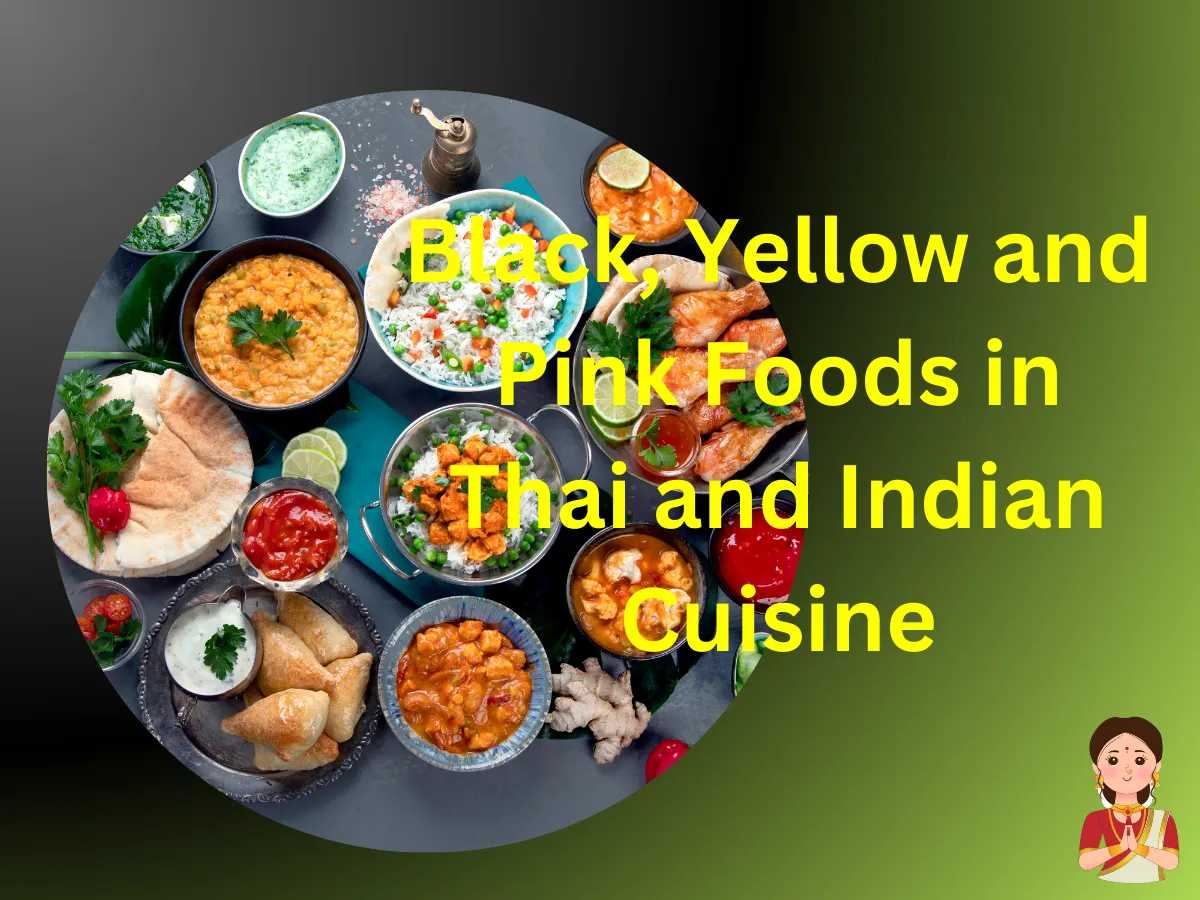
Yellow and Pink Foods: Unusual Delights for Your Taste
Must-Try Yellow and Pink Foods That'll Surprise Your Taste Buds
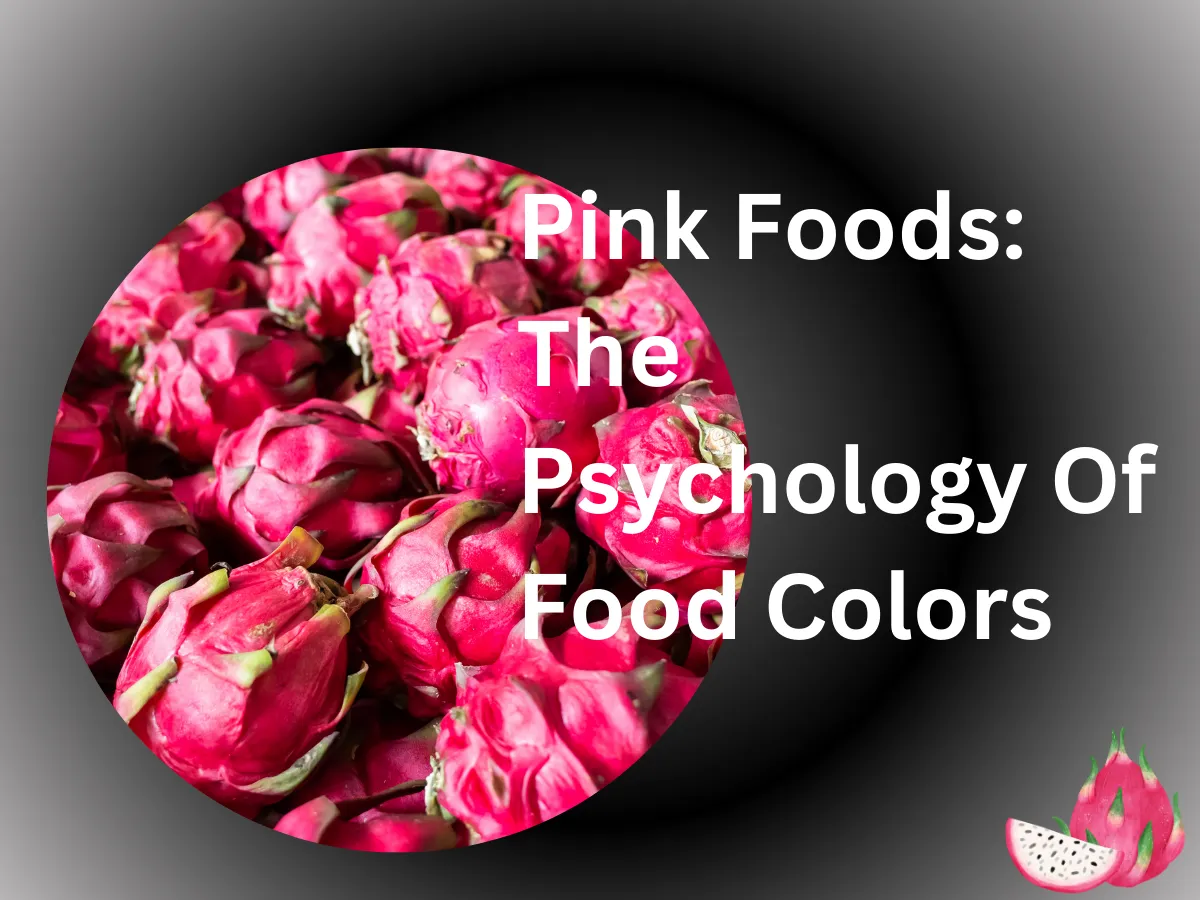
Pink Foods: Know The Psychology Of Food Colors
Discover the Mind-Blowing Psychology Behind Pink Foods - You Won't Believe !!!
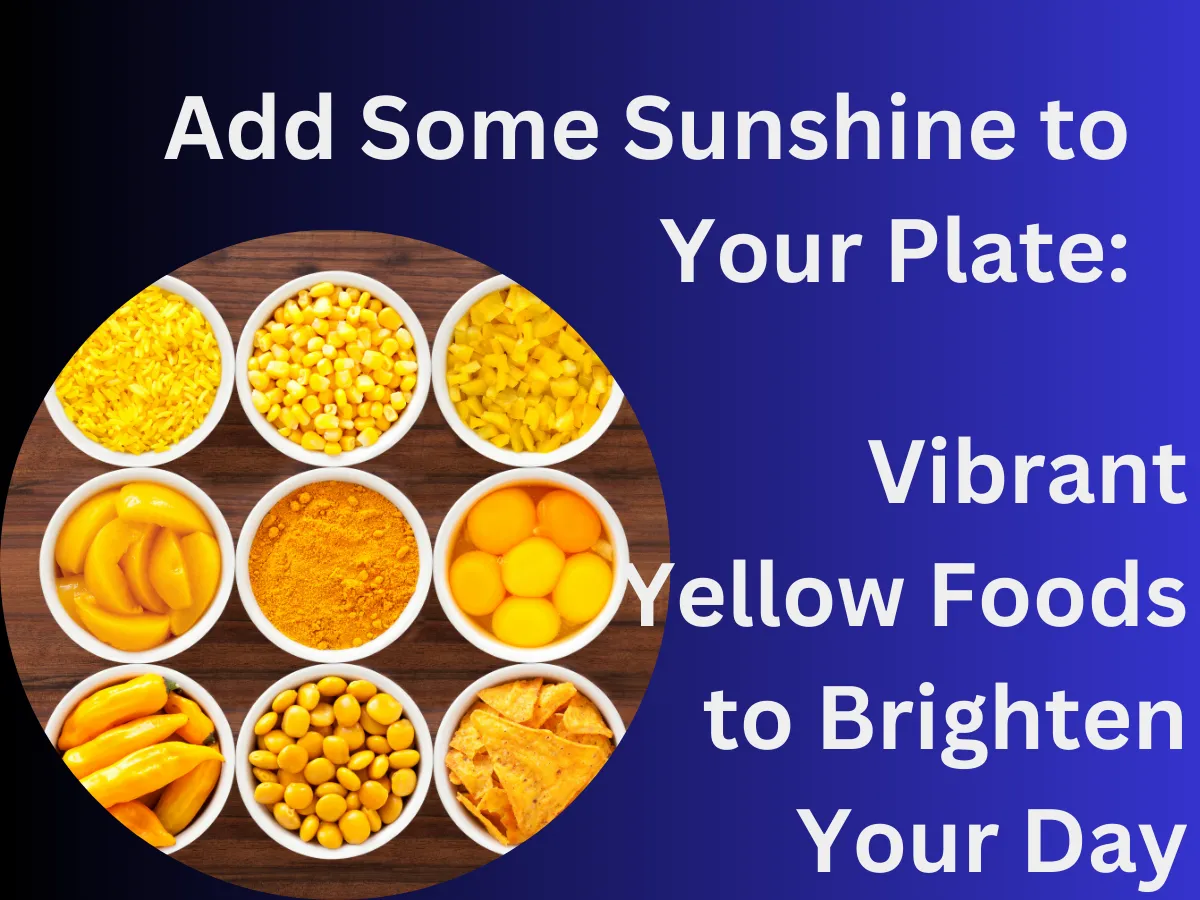
5 Yellow Foods That Will Brighten Up Your Plate
Yellow Foods That Will Make Your Plate Shine Like Never Before!
